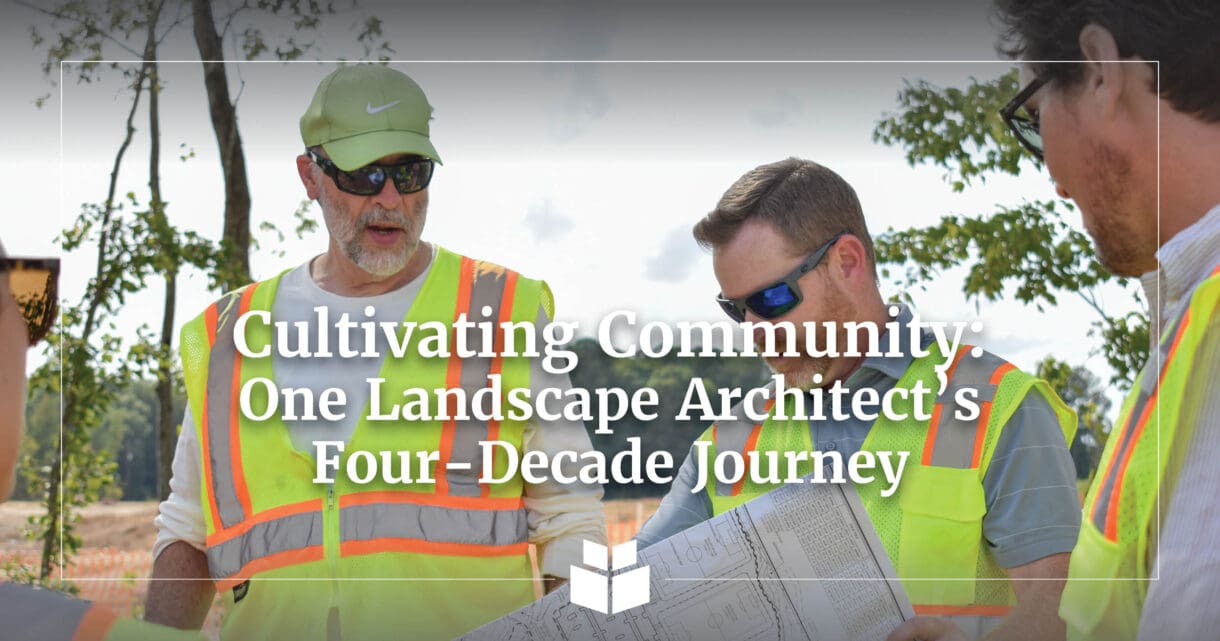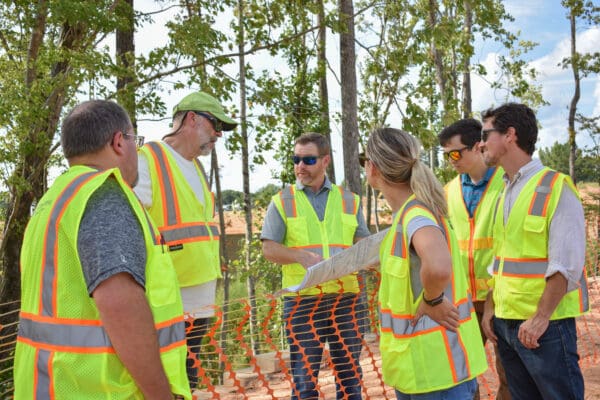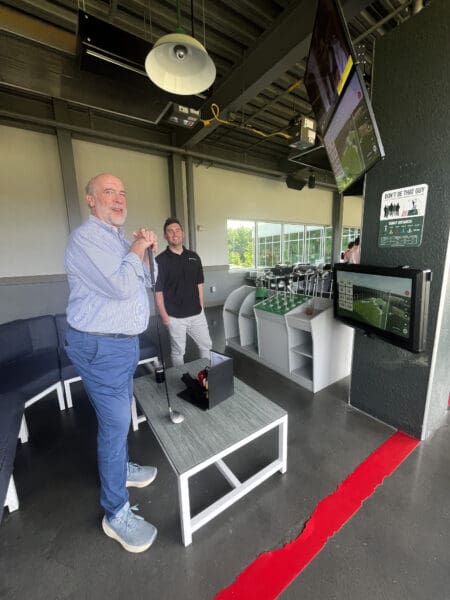
A changing landscape that remains familiar: Brian Starkey reflects on more than 40 years in landscape architecture
For more than 40 years, WithersRavenel Parks and Recreation Project Director Brian Starkey, PLA, ASLA, has been practicing landscape architecture. Brian’s journey has included working for a few large design firms; spending three years in Amsterdam; leading his own business, OBS Landscape Architects, from 1996 to 2018; and spending the last five years at WithersRavenel.
Brian has taken note not only of the changes in the profession and the role of the landscape architect, but he also recognizes that the “why” landscape architects do what they do has not changed. However, “how” they do the job has changed.
As we celebrate Park and Recreation Month, Brian discussed the evolution of landscape architecture within the context of park planning and design and what continues to excite him about the job.
The growth of specialization
When Brian started his career, landscape architecture was more of a profession of generalists. LAs would ply their trade and apply their skills to a wide variety of public and private sector projects. Today, Brian finds the field to be more organized around specialists tackling more focused design tasks and objectives.
“There has been a movement over the past couple of decades, and maybe more, from generalist landscape architect to expert,” Brian said. Some examples he pointed out are specialists in designing inclusive children’s play environments, resilience planning and design, greenways and trails, as well as historic landscapes.

Taking on broader environmental issues
While landscape architects have always been focused on how their park and recreation projects improve communities, these designs now take on larger environmental issues with resilience in mind.
“We are now designing parks and expanding the landscape’s capacity to withstand flood events. It’s not just coastal resilience. We have been reminded that nowhere is completely safe,” Brian said, pointing out the devastating damage from Hurricane Helene in the mountains of Western North Carolina. “Most of us were schooled in environmental awareness, but nature’s influence has become more pronounced and these issues will remain at the forefront in the practice of landscape architecture,” Brian said.
Constant advances in technology
“When I started out,” Brian said, “we were creating construction drawings with ink pens on Mylar.” Perspective drawings were also done by hand, and the process was often time-consuming. Today, concept design and construction plans are completed using a variety of computer software; further changes through artificial intelligence are on the horizon as well. While Brian still believes in the value of Sharpies on trash paper, he recognizes the benefits of technology as well.
“The ability to illustrate our work and communicate our work to our clients and to the community is something we can do much better today, and do it a lot quicker,” he said. Advancements in 3-D illustration and the possibilities afforded by virtual reality allow landscape architects to better understand their own work during the design process and communicate the spaces we are creating more accurately.
Community engagement
Early in his career, Brian did not experience community engagement during the design process. Not only has he enjoyed the increased emphasis on engagement and advocacy in the profession, he also believes in it. He enjoys getting out into communities and learning the community’s history, hearing the stories of residents, and understanding their aspirations. He believes in amplifying the community’s voice and building solutions on local knowledge.
“We are facilitators,” Brian said. “The spaces that we help create are not ours. They belong to the community. Hopefully, our contribution helps tell the community’s story and connects them and those who visit to that place.”
“I’m an advocate of raising people’s voices in the design process because it can only make the project better, create a more meaningful experience and strengthen the connection to place.
“By creating a sense of ownership and pride in the community, park and recreation projects connect people to nature and to each other,” Brian said. Community involvement during design can reduce on-site vandalism and crime. Our park projects also improve the mental and physical health of people and provide opportunities for people of all ages and abilities.
“If you go into engagement with an open mind, you will be able to create a sense of trust with the community,” Brian said. “Then you will find out things that shape your design and make the space more meaningful.”
Brian recalled a greenway project early in his career where community members had specific concerns about safety and protecting the environment. Consequently, he engaged community members throughout the design process. Years later, Brian asked the parks director about how that segment of the greenway was faring.
“He said, ‘We don’t go over there. The neighborhood takes care of that trail. It’s theirs.’” The residents blow the leaves, mow, and keep the trail clean. The power of community buy-in was powerful for that particular project, and made an impression on him. “Creating that sense of ownership in the spaces we help create is the goal of community engagement,” Brian said.
Mentorship and professional involvement
Brian recalled that as a young landscape architect, he had an opportunity to redesign space at the brink of Niagara Falls in New York. Perhaps the most visible project of his career, it furthered his love of landscape architecture and created a passion for park design. Brian enjoys helping nurture that love of landscape architecture with young co-workers and students today.

He suggests that “the opportunity for young landscape architects to touch various project types so that they can figure out what they really want to gravitate to is critical.” Becoming an expert is typically built upon their formal education.
Through relationships with programs at North Carolina State and North Carolina A&T, Brian has had the opportunity to advise students and connect them to projects in local communities. Giving back to the profession, he has been heavily involved in leadership roles for the North Carolina Society of Landscape Architects (NCASLA) and the North Carolina Board of Landscape Architects (NCBOLA). Brian has also engaged in public service on Raleigh boards and commissions focused on art, design, environment, and community appearance.
“I enjoy giving back, and interacting with young designers,” Brian said. They teach me things as well.”
What does the future hold?
Even after more than four decades in the profession, Brian is still excited by the opportunities to design spaces and work with clients and co-workers. The world and the landscape architecture profession may be changing quickly, but Brian takes comfort in knowing that the purpose, mission and the “why” of the profession is generally unchanged.
“Technology is great, but we will always need human interaction to create responsive design,” Brian said. “We still have to communicate with our clients, with the people that live in the communities where we work, and the people that will use the spaces that we design. We need to understand their story and balance it with the opportunities presented by the land to create responsible and meaningful experiences.”
